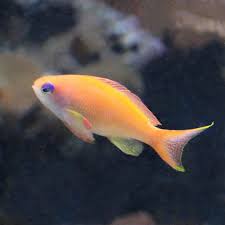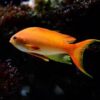Dragons in Creative Fashion Designs Inspired by History

Dragons have long held a special place in various cultures, often symbolizing power, mystery, and wisdom. These mythical creatures have inspired countless forms of art, from ancient paintings and sculptures to modern-day fashion. In recent years, the depiction of dragons in fashion has seen a resurgence, as designers draw upon historical references to create innovative and intricate clothing collections that reflect the beauty, majesty, and symbolism of dragons. This fusion of history and creativity has given rise to a new wave of dragon-inspired fashion, where ancient stories meet modern sensibilities.
In this article, we explore the role of dragons in creative fashion designs inspired by history, examining how fashion designers have used this iconic creature as a muse to create compelling, historically influenced designs. We will also look at how dragons’ cultural significance across different parts of the world has shaped these fashion collections and how they reflect the evolution of dragon imagery in contemporary fashion.
1. The Cultural Significance of Dragons in History
Before delving into how dragons have influenced modern fashion, it’s important to understand their historical significance. The dragon is a deeply symbolic creature in many cultures, each with its own interpretations and meanings.
- In China, dragons are revered as symbols of imperial power, good fortune, and natural control. They are often depicted as benevolent, wise, and benevolent creatures associated with water, weather, and fertility. The Chinese dragon, traditionally depicted as a long, serpentine creature with horns, has been a part of the nation’s cultural identity for centuries.
- In European mythology, dragons are often portrayed as fierce, fearsome beasts. In ancient Greek and Roman stories, dragons were symbols of chaos and destruction, while in medieval times, dragons were frequently depicted as adversaries to be vanquished by heroes. The European dragon, typically with wings and fire-breathing capabilities, is often seen as a force of evil or a symbol of untamed power.
- In Japanese culture, the dragon is associated with strength, protection, and good luck. In contrast to the European dragon, the Japanese dragon is often more serpentine in shape and frequently associated with water, rain, and the mythical guardians of temples and shrines.
- In other cultures, such as those in India, the dragon may be seen as a guardian figure or even a symbol of wisdom and spiritual enlightenment. The Indian dragon, like the Chinese dragon, often appears as a powerful, revered figure.
These rich cultural backgrounds have provided designers with endless inspiration, allowing them to incorporate elements of traditional dragon iconography into their fashion collections. By drawing upon the stories, symbolism, and aesthetics of dragons, designers are able to create garments that speak to both history and modern creativity.
2. Dragons as a Source of Inspiration in Fashion History
The use of dragon imagery in fashion can be traced back to ancient times, particularly in the East. In Chinese imperial court fashion, the dragon was often embroidered onto robes and garments as a symbol of the emperor’s authority. The dragon motif appeared on garments made of luxurious materials like silk and brocade, often in intricate patterns or as part of elaborate designs.
In the West, dragons have appeared in various forms of royal attire. For instance, in medieval Europe, royal coats of arms and heraldic symbols often featured dragons as representations of noble families’ power and bravery. During the Renaissance, dragons began to appear in tapestries and royal portraits, often as symbols of strength, victory, and conquest.
Throughout history, the image of the dragon has been used in fashion to convey prestige, nobility, and mythical power. In modern times, these historical references continue to inspire designers who aim to create garments that evoke a sense of grandeur, mystique, and timeless beauty.
3. Dragons in Contemporary Fashion Design: Fusing History with Innovation
In recent years, fashion designers have increasingly looked to history for inspiration, reimagining traditional motifs and symbols to create unique, contemporary collections. The dragon, with its rich history and diverse meanings, has become a prominent figure in the fashion world, particularly in collections that aim to blend historical influences with modern trends.
One of the most notable ways that dragons have been incorporated into contemporary fashion is through the use of embroidery and intricate detailing. Designers often draw upon the visual language of dragon motifs found in historical garments, translating them into modern forms of embroidery, appliqué, or beading. For example, a dragon may be embroidered on a flowing silk gown, creating an elegant and ethereal representation of this ancient symbol. Alternatively, a leather jacket may feature a dragon design, adding an edge of mysticism and power to an otherwise contemporary piece.
The use of rich, historical fabrics is also a significant part of dragon-inspired fashion. Designers may incorporate brocades, silks, velvets, and other luxurious materials, recalling the opulence of historical fashion while reimagining it through a modern lens. These fabrics are often used to create statement pieces, such as dragon-themed dresses, coats, and accessories, that make a bold impact in both fashion shows and everyday life.
4. Dragons on the Runway: Notable Designers and Fashion Collections
Several renowned fashion designers have used dragon motifs in their collections, adding a unique historical and cultural layer to their work. Here are a few examples of designers and collections that have explored the dragon theme:
- Jean Paul Gaultier: Known for his bold and unconventional designs, Gaultier has frequently incorporated dragons into his collections. For instance, his Spring/Summer 2007 collection featured elaborate dragon motifs in both the clothing and accessories. The intricate designs were influenced by Asian aesthetics, with delicate dragon embroidery on dresses and jackets, blending Eastern symbolism with Western high fashion.
- Gucci: Under the creative direction of Alessandro Michele, Gucci has embraced bold, eclectic designs with a strong focus on historical and cultural influences. In several collections, Gucci has incorporated dragon imagery, often in the form of embroidered dragons on jackets, shirts, and accessories. These dragons are portrayed with intricate details and vibrant colors, celebrating the beauty and power of the mythical creature while aligning with Gucci’s signature retro-futuristic aesthetic.
- Valentino: The Italian luxury fashion house Valentino has explored dragon imagery in both its haute couture and ready-to-wear collections. Dragon motifs have appeared in the form of beaded designs, embroidered patches, and even sculptural accessories. These dragon-inspired designs often evoke a sense of regal power, connecting the wearer to the mythical and historical symbolism of the creature.
- Alexander McQueen: The late Alexander McQueen was known for pushing the boundaries of fashion with dramatic, conceptual designs. His collections often incorporated elements of mythology and symbolism, including dragon motifs. McQueen’s use of dragons was often dark and mysterious, reflecting the power and danger of the creatures. His designs, which frequently mixed traditional and futuristic elements, brought dragons into the modern fashion conversation with an avant-garde edge.
These designers have demonstrated how dragons can be reinterpreted through fashion, breathing new life into an age-old symbol while maintaining the essence of its cultural and historical significance.
5. Dragons in Fashion Accessories: Jewelry, Shoes, and Bags
In addition to clothing, dragons have made their way into fashion accessories, with jewelry, shoes, and bags becoming popular canvases for dragon-inspired designs. Jewelry, in particular, is an ideal medium for showcasing the intricacies of dragon imagery. Designers often use precious metals, gemstones, and intricate craftsmanship to create dragon-shaped rings, necklaces, bracelets, and earrings.
For example, jewelry designers have created dragon rings that feature intricate dragon scales, eyes made of colored gemstones, and even dragon wings wrapped around the fingers. These pieces of jewelry often combine historical symbolism with modern design, making them not only beautiful accessories but also powerful talismans.
Shoes and bags have also become platforms for dragon-inspired designs. High-fashion footwear often features dragon motifs embossed on leather, or even 3D dragon shapes created from fabric and metals. Dragon-themed bags, particularly handbags and clutches, are popular choices for fashion-forward individuals looking to add a touch of mysticism to their outfits. These accessories combine history and fashion in a way that adds a layer of depth and meaning to an otherwise simple item.
6. The Future of Dragon-Inspired Fashion
The popularity of dragon motifs in fashion shows no sign of waning. As designers continue to explore the fusion of history, mythology, and modern trends, dragons will likely remain a prominent feature in fashion collections. The combination of timeless symbolism and innovative design ensures that the dragon will continue to inspire future generations of designers.
As global fashion continues to evolve, there may be more cross-cultural influences that bring together different interpretations of dragons. For example, we may see the fusion of European and Eastern dragon motifs in new, hybrid designs, combining both powerful and mystical elements. Furthermore, the use of digital technology in fashion design may offer new opportunities for creating dynamic and interactive dragon-inspired pieces, allowing the wearer to engage with the design in innovative ways.
Conclusion
Dragons have transcended their mythological origins to become one of the most enduring and versatile symbols in fashion. Whether in clothing, accessories, or footwear, dragons offer a wealth of creative possibilities for designers, blending historical references with modern aesthetics. As fashion continues to evolve, dragon-inspired designs will undoubtedly remain an integral part of the industry, offering a timeless connection to the past while continuing to inspire the future of fashion.

